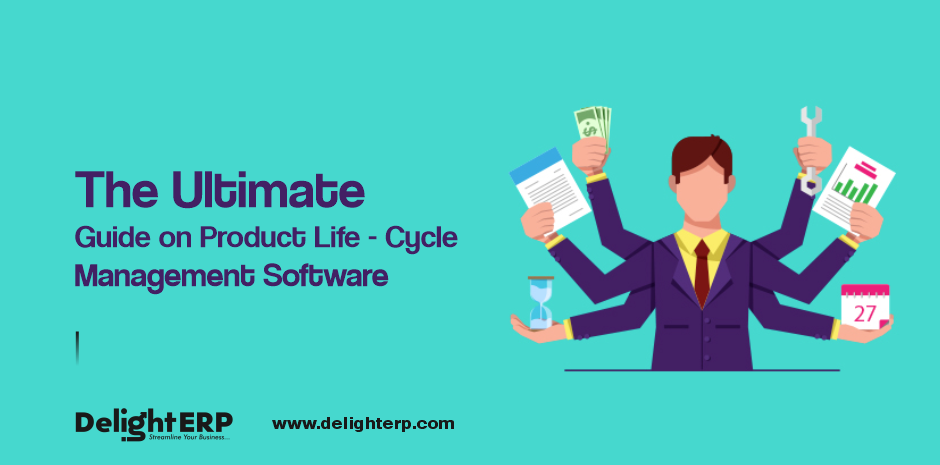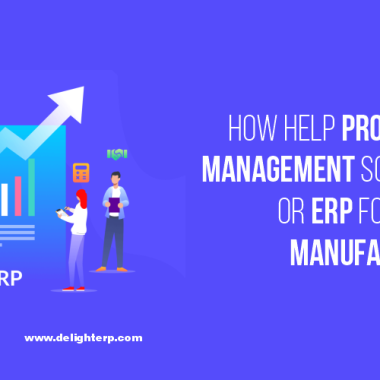Introduction:
Right from searching for a perfect mobile device to adding them to the shopping cart, ordering it, receiving the shipment, and then using it, you have been an active part of a product life-cycle management software in the market.
In general, whenever a product is launched, its life cycle starts, from not being known to the customers, to the people buying it and using it and then discarding it once the purpose has been served. The life cycle of the product ends once it gets picked away from the market and is no more a part of sales.
Hence, the product life cycle starts from launching it in the market and ends when the product is on the verge of retirement, i.e. no more sales of the product.
Summing up, we define a product life cycle as: “a procedure a product needs to undergo when it is introduced in the market for the first time, till it has been removed from the market, making it unavailable for sale.”
So, from the above definition, we can conclude that the product undergoes four levels in its life cycle, which are categorized as introducing or launching of the product, growing phase, mature phase, and declination from the market.
If a product is popular enough and has a large amount of satisfied customer base, it remains in the maturity phase for a longer time as compared to the products that fail to gain popularity and the satisfied customer base. Other reasons for entering declination level can be saturation, increase in competition, decrease in demand due to the launching of other modern solutions, and drastic downfall in sales of that product.
Various analyses on the lifecycle of a product have been carried out in the organizations for sustenance and so the longevity increases. Also, if it fails to meet the market needs, the organizations, with respect to analyses, modifies the product to maintain its life cycle in the market.
Getting a brief idea about the product life cycle, let us discuss the four levels of the same, as mentioned above. These four levels can be described as:
1. Introducing or launching the product by Product Life-cycle Management Software:
Once the organization concludes building or creating a process for the product, it is launched in the market, with full-fledged promotions of the same to inform the target people about its successful launch.
2. Growth of product by Product Life-cycle Management Software:
This level is acquired as soon as the product becomes popular amongst its audiences and is being increasingly and frequently bought by them. This leads to rising in the sales of the product too.
3. Mature stage of a product:
The product has now acquired its threshold, which means the sales have now become stable and might face a downfall if not able to survive efficiently. At this level, campaigns are implemented to retain it in the market and not for the revenue. Competition amongst the products is maximum at this level.
4. Declination of the product:
At this level, the product is now no more bought frequently, resulting in a huge drop in sales. Also, the decreasing interest of the customer or the introduction of a better solution by rivals plays a crucial role in its retirement.
What is product life-cycle management software?
The product life cycle management can be defined as the method to manage data and processes utilized in creating, designing, selling, etc. in its lifecycle as well as its supply chain. It is being referred to as a broader term rather than just managing the engineering process of the product.
The outcomes of the PLM are helpful in the decision-making process in a business, which may vary based on the pricing, marketing, enhancement, or cost reduction.
An effectively designed product lifecycle management unites companies, their departmental teams, individual employees, etc. who are involved in the manufacturing process to streamline the processes involved, with a motive to manufacture the best products that can beat rivals, generates maximum profits, and can last in the market for a longer time.
The PLM systems can be helpful to organizations in coping up with the rise in complicated engineering challenges for building the products from scratch. This system is being considered as one of the four pillars of the information technology for building a product, the other three being- managing communication with the clients using CRM, relationships with the suppliers using supply chain management, and dealing with resources in the company using ERP.
It is an important thing to note that PLM is a combination of both – creation and marketing.
Also Read: Importance Of Supply Chain Management For Food Industries
How it useful for business?
A PLM platform is a standalone platform for the companies managing all the stages of the lifecycle of the product. The usefulness of a PLM system can be as follows:
1. Requires shorter promotional time:
Once data about the status of the life cycle in which the product is currently placed is shared centrally, the team can easily and quickly plan out campaigning strategies, if it is in an initial stage, the strategies are implemented such that there is a rise in sales, whereas in the matured stage, survival is more crucial and the planning are defined accordingly.
2. Reduction in risks for compliance:
All the data related to the status and the level of product in the market is being stored in the PLM system and the further processes are defined accordingly. Hence, this eradicates the chances of product compliance.
3. Reduced Costs:
When a product is in the design stage, one can predict the cost of building it, with the help of PLM. This reduces the cost of extra efforts to find the cost estimations for the manufacturing process, and also for the raw material to be imported.
4. Increase in productivity:
The time spent in checking the product data, moving it across the organization whenever there is a need by replicating it, etc. is much more when done manually, as compared to that done in a PLM system. As the PLM system reduces these efforts and saves more time, the employees of the organization can now focus on productive approaches to increase sales.
5. Increasing growth of revenues:
This is the most important reason why the organizations are opting for the PLM systems, as it manages the cost-related issues and solutions for the product.
6. Enhancing the quality of the product:
Once the analysis reports have been generated, the company can have details on how to increase the quality of the product for its longer sustenance in the market.
So these were some of the reasons why organizations should execute the PLM systems to increase sales of a particular product.
What are the benefits of Product Lifecycle Management?
In this section, we would be discussing the real-time benefits of implementing the PLM in an organization. These are listed as follows:
• Improvement in quality and reliability of the product has been possible since the organizations can now have a deep insight into the levels of the product life cycle and can execute newer methods to improve the quality.
• Due to the design phase too included in the life cycle, the cost of prototyping with the help of external entities can be reduced too much an extent.
• Since the quality of a product is better than the previous one and has got a good response in the market, a number of suppliers approach the company for the RFQ.
• Since the methods to sustain the product have been implemented, the product can generate a huge amount of revenue, and also the graph of sales versus time increases rapidly.
• Whilst launching a new product, the companies have a tendency to view the statistics of the older product, stored in the PLM systems. This is quite a smart move by the business owners to analyze the previous data to predict the response the new product will be getting, along with the expected duration of a product to sustain in this competitive market. Hence, a lot of time and resources can be saved whilst launching a new product.
• As mentioned above, a lot of time and effort can be saved, and hence the cost of the building is also effectively reduced with PLM.
• It is possible a product is quite in demand for a particular period, whilst for other times; it is in the declination stage. Again, when a similar period comes, the product is in demand again. We call it seasonal fluctuations, for example, popularity for air conditioners rise during summer only. These types of fluctuations are also managed by the PLM.
• With the increasing popularity of the product, managing the supply chain also improves at a fast pace.
CONCLUSION
At the end of the blog, in which we came across the initial introduction of the product life cycle and its management, advantages if or a company and overall benefits of the PLM, we can conclude that it is an optimized solution for the organizations working hard for sustaining the product in the market.
Have a Free Demo of ERP software and detailed information on product life-cycle management software at a leading ERP Software company.
Thank You For Reading!!!


